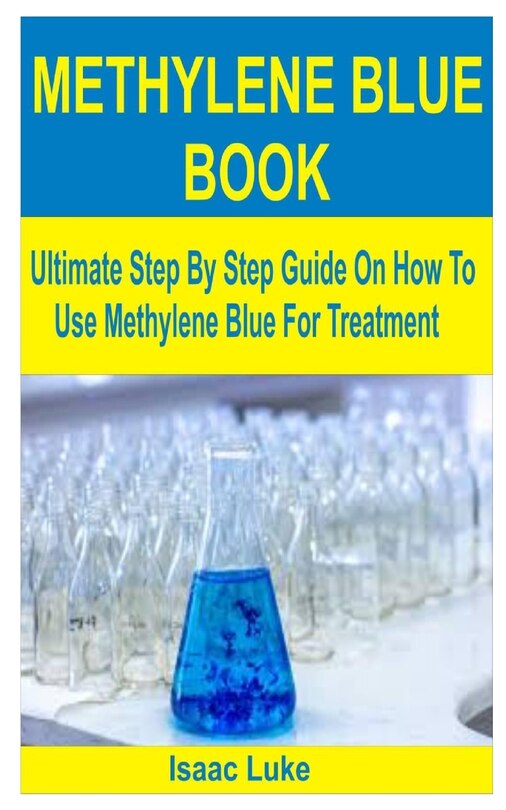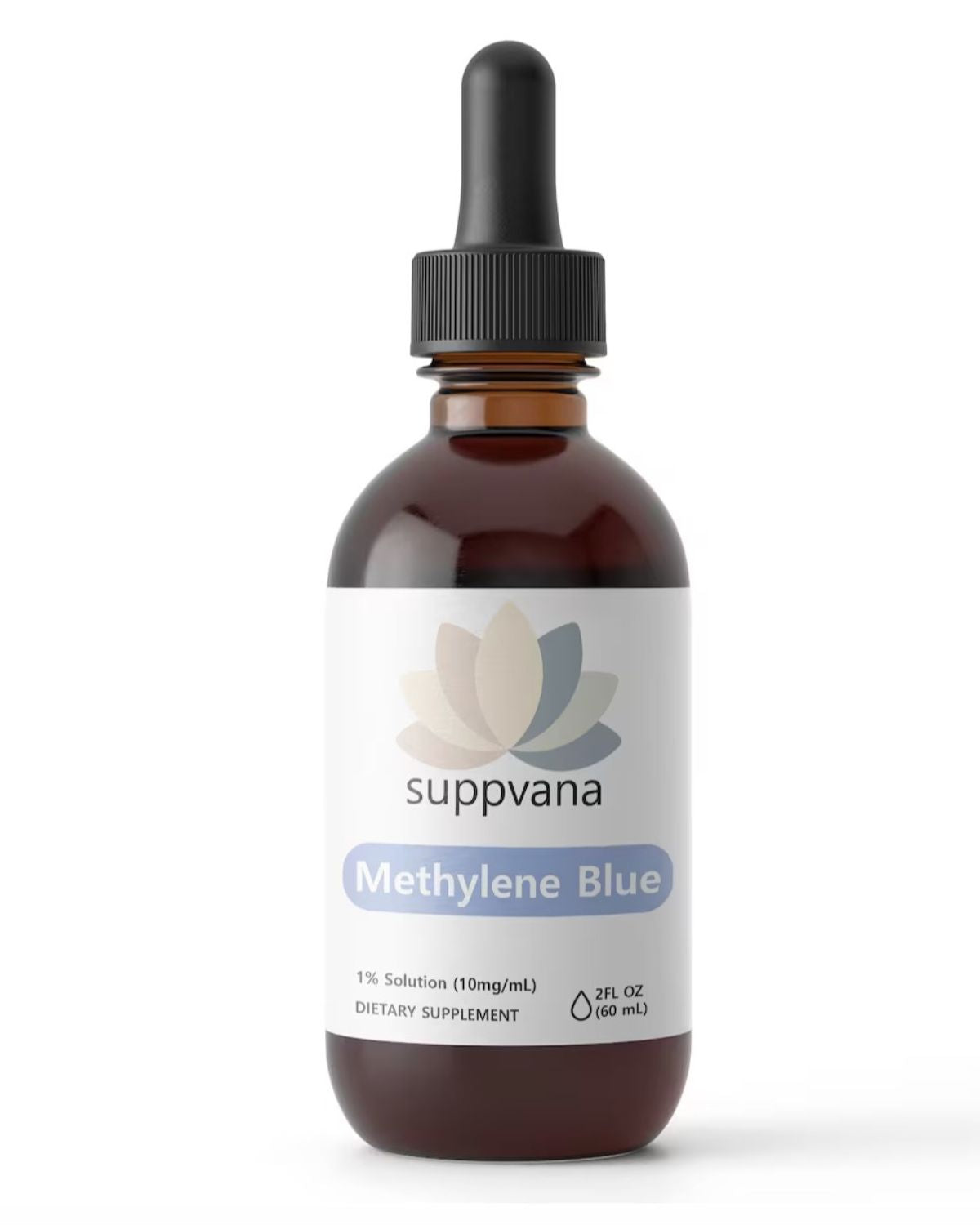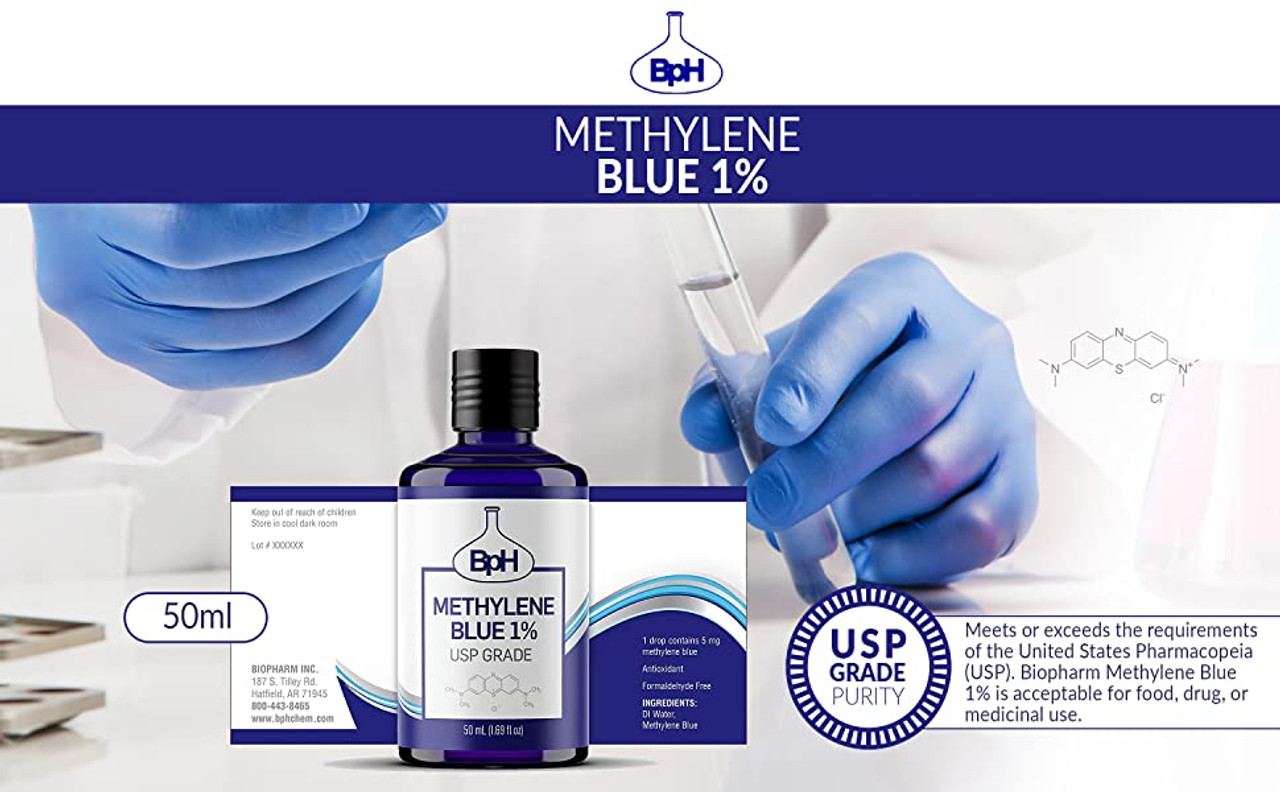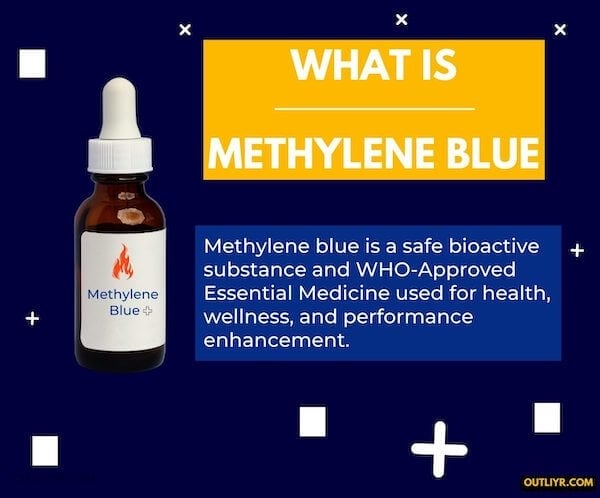How To Use Methylene Blue Drops

Imagine a vibrant blue vial, catching the light like a miniature ocean held captive in glass. A single drop, carefully measured, holds the promise of clarity, of sharpened focus, and perhaps even a touch of youthful energy. This isn't a potion from a fantasy novel, but methylene blue, a compound with a surprising range of applications, and understanding how to use it correctly is key to unlocking its potential.
This article serves as a guide to the safe and informed use of methylene blue drops. We'll explore its background, discuss potential benefits, and, most importantly, provide step-by-step instructions on how to incorporate it into your routine while prioritizing safety and responsible usage.
The History of Methylene Blue: From Dye to Potential Powerhouse
Methylene blue, despite its recent surge in popularity, has a history stretching back over a century. Originally synthesized in 1876 by Heinrich Caro, it quickly found use as a dye in the textile industry.
Its medical applications soon followed. Paul Ehrlich, a Nobel laureate, discovered its effectiveness against malaria in the late 19th century, marking a significant milestone in the fight against the disease.
Throughout the 20th century, methylene blue also served as an antidote for cyanide poisoning and methemoglobinemia, conditions where the blood can't effectively carry oxygen. Its versatility continues to intrigue researchers, leading to ongoing investigations into its potential for cognitive enhancement and anti-aging properties.
Understanding the Potential Benefits
The potential benefits of methylene blue are currently a hot topic of research. While more studies are needed, preliminary findings suggest promising avenues in several areas.
One area of interest is its impact on cognitive function. Some studies suggest that methylene blue may enhance memory and improve focus by boosting mitochondrial function in brain cells.
Mitochondria are the powerhouses of our cells, and optimizing their performance can have widespread effects. Methylene blue's potential to improve mitochondrial efficiency has also sparked interest in its anti-aging properties.
Beyond cognitive enhancement, researchers are exploring its potential as an antioxidant and its role in protecting against neurodegenerative diseases. These studies, while promising, are still in their early stages.
It's crucial to emphasize that methylene blue is not a cure-all, and its effects can vary significantly from person to person. Always consult with a healthcare professional before incorporating it into your routine.
Step-by-Step Guide: Using Methylene Blue Drops Safely
Before we delve into the specifics, a critical disclaimer: Always consult with your doctor or a qualified healthcare professional before starting methylene blue. They can assess whether it's appropriate for you based on your individual health history and any medications you're currently taking.
1. Choosing the Right Product
Not all methylene blue products are created equal. Look for pharmaceutical-grade methylene blue from a reputable source. Ensure the product is certified for purity and free from contaminants.
Pay close attention to the concentration of the methylene blue solution. This will determine the number of drops you need to take. Be aware of potential scams and unregulated sources.
Avoid industrial-grade methylene blue, which is not intended for human consumption and can contain harmful impurities.
2. Determining the Correct Dosage
Dosage is highly individual and should be determined in consultation with your healthcare provider. A common starting point is a very low dose, gradually increasing as tolerated.
A typical starting dose might be around 0.5 to 1 mg of methylene blue per kilogram of body weight per day, but again, this is just a general guideline. Start low and go slow.
Carefully measure the drops using a calibrated dropper. Avoid using homemade droppers, as they can lead to inaccurate dosing.
3. Administering the Drops
Methylene blue drops can be taken orally. Some people prefer to dilute the drops in a small amount of water to minimize any potential staining of the mouth.
Take the drops with or without food, depending on your preference and tolerance. Observe how your body reacts to the methylene blue and adjust the timing accordingly.
Consistency is key. Try to take the drops at the same time each day to maintain a steady level in your system.
4. Monitoring for Side Effects
As with any supplement or medication, methylene blue can cause side effects in some individuals. Common side effects may include nausea, abdominal discomfort, and temporary blue discoloration of urine or stool.
More serious side effects are rare but can include allergic reactions, headache, dizziness, and, in very rare cases, serotonin syndrome if taken with certain medications.
If you experience any adverse effects, discontinue use and consult with your healthcare provider immediately.
5. Important Considerations and Contraindications
Methylene blue can interact with certain medications, particularly selective serotonin reuptake inhibitors (SSRIs) and monoamine oxidase inhibitors (MAOIs). Avoid taking methylene blue if you are on these medications without explicit guidance from your doctor, due to the risk of serotonin syndrome, a potentially life-threatening condition.
People with glucose-6-phosphate dehydrogenase (G6PD) deficiency should avoid methylene blue, as it can cause hemolytic anemia.
Pregnant or breastfeeding women should also avoid methylene blue due to a lack of safety data in these populations.
Beyond the Drops: A Holistic Approach
Methylene blue, while potentially beneficial, should be viewed as just one piece of the puzzle. Optimal health and well-being require a holistic approach that encompasses a balanced diet, regular exercise, sufficient sleep, and stress management.
Do not rely solely on methylene blue to address underlying health issues. Work with your healthcare provider to identify and address any root causes of your symptoms.
Consider methylene blue as a potential complement to a healthy lifestyle, not a replacement for it.
A Note of Caution and the Importance of Research
The research on methylene blue is ongoing, and much remains to be understood. It is essential to approach claims about its benefits with a healthy dose of skepticism and to rely on evidence-based information.
Be wary of exaggerated claims and unsubstantiated promises. Consult with reputable sources and healthcare professionals to get accurate information.
Support further research into methylene blue to better understand its potential and limitations. Informed decisions require solid scientific backing.
Concluding Thoughts: Embracing Informed Choices
Methylene blue, with its rich history and promising potential, offers a glimpse into the fascinating world of biohacking and personalized medicine. However, its use requires careful consideration, informed decision-making, and a commitment to safety.
By understanding the background, potential benefits, and proper usage of methylene blue drops, you can empower yourself to make responsible choices about your health and well-being. Always prioritize consultation with healthcare professionals and rely on credible sources of information.
Ultimately, the goal is to navigate the exciting world of potential health enhancements with both curiosity and caution, always seeking a path that is safe, informed, and tailored to your individual needs.


















